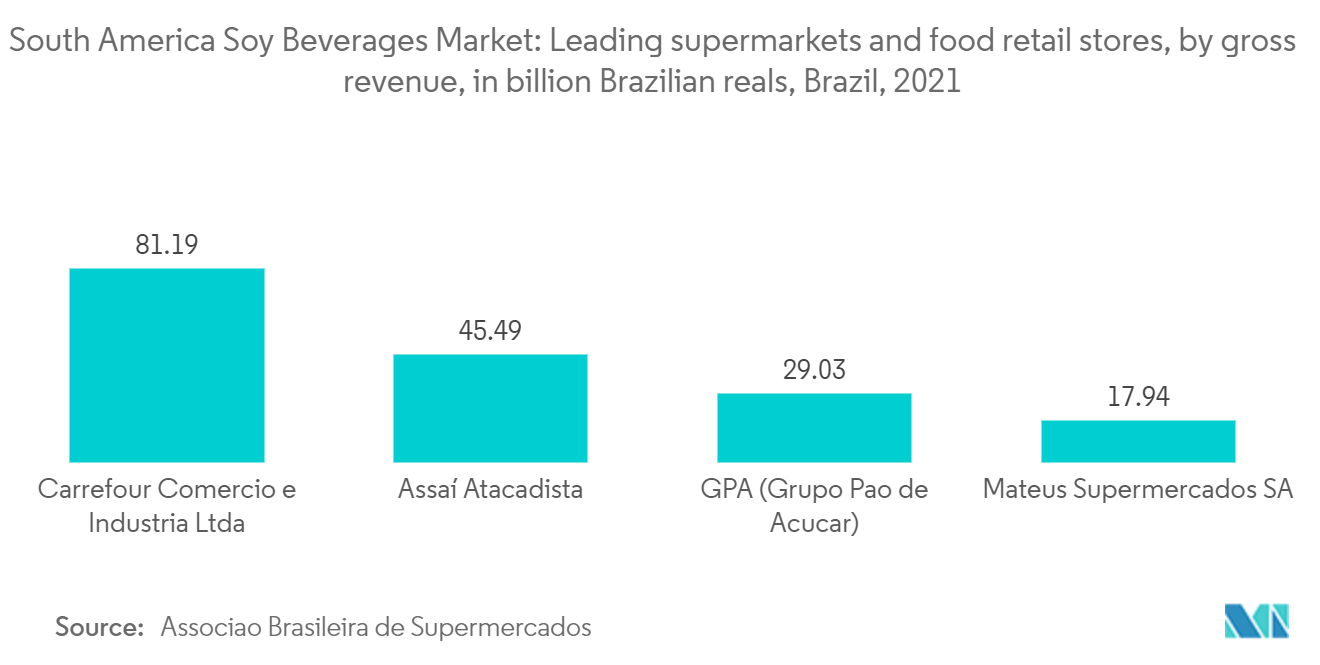Market Trends of South America Soy Beverages Industry
This section covers the major market trends shaping the South America Soy Beverages Market according to our research experts:
Increasing Veganism in the Region
Consumers shifting toward plant-based proteins, grown organically and without genetically modified ingredients, has been creating a huge demand for soy beverages in the region. One of the reasons more and more people are reducing their intake of animal products is that the range of alternatives on offer is significantly larger and more appealing than it has ever been before. Aside from innovation, another fundamental reason behind the growth of the vegan food and beverage market is rising consumer awareness of the health consequences of eating animal products, as well as the ethical and environmental impact of animal agriculture. Dairy alternatives offer the advantages of low-fat, low-calorie, and low-cholesterol content, appealing to health-conscious, vegan, and lactose-intolerant consumers. For instance, in September 2022, Mapa Veg announced that according to an online survey as of September 2022, the number of self-identified vegetarians, vegans, and supporters in Brazil was highest in the city of São Paulo, with more than 4.2 thousand respondents. This growing trend of veganism, coupled with the increasing awareness of the health benefits of soy beverages, is supporting the growth of the soy-based beverages market in the region.

Supermarkets/Hypermarkets Remained the Largest Point of Sale
Supermarkets/hypermarkets have large consumer bases across the region. A common perception among consumers that fresh products will be available in these supermarkets/hypermarket leads their way to these stores. As a result of which, supermarkets/ hypermarkets account for major sales of soy beverages across the region. Additionally, consumers prefer purchasing grocery products through supermarkets more, as it offers several products and brands to choose from, which saves time, energy, and money, owing to several promotional discounts. For instance, after Carrefour, Brazil's top supermarket is Assaí Atacadista, which is part of the GPA group, also known as Grupo Pão de Açúcar. According to Associação Brasileira de Supermercados, Carrefour Comércio e Indústria Ltda. was the leading supermarket and food retail store in Brazil in 2021, with an annual gross revenue of approximately BRL 81.2 billion. Assaí Atacadista followed closely behind Carrefour, in the second position with BRL 45.49 billion. Carrefour's gross revenue in Brazil has been increasing at a robust pace over the past decade, boosted by the purchase of the wholesale Brazilian hypermarket chain Atacadão. Similarly, small supermarkets in the region are also keen on spreading their presence as the people in the region majorly use supermarkets for all their purchases. For instance, according to Associação Brasileira de Supermercados, in 2021, supermarkets Frios Vilhena was the leading small grocery store in Brazil, with an annual gross revenue of nearly BRL 137.2 million. With this growing consumers purchases from supermarkets, major soy beverage players in the region are actively associating with supermarkets to display their products.


